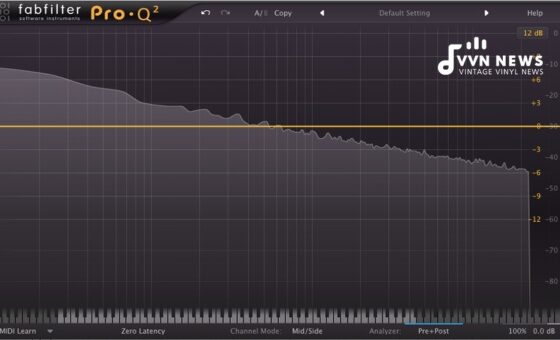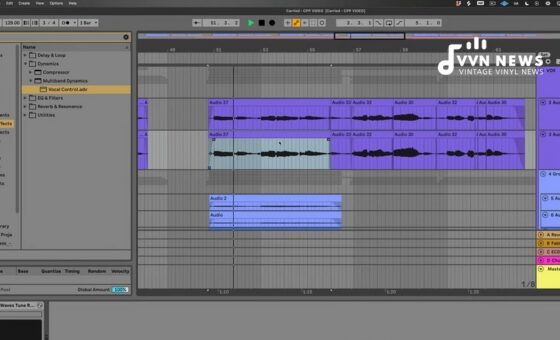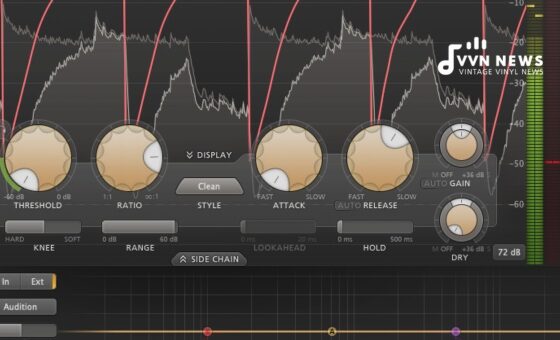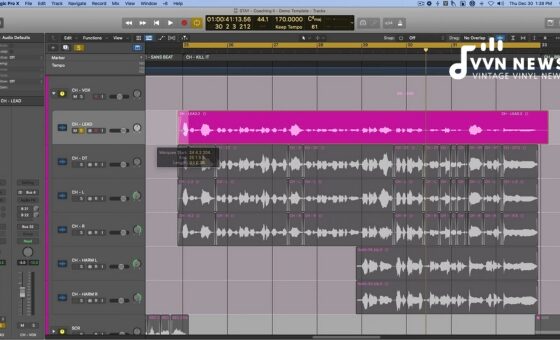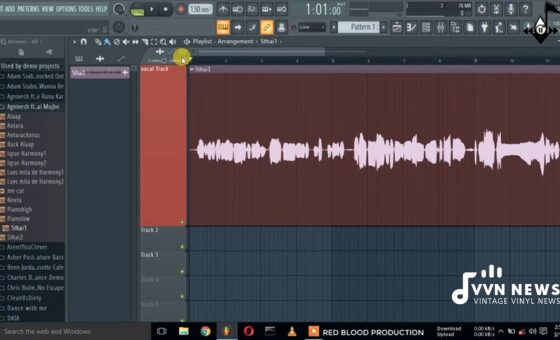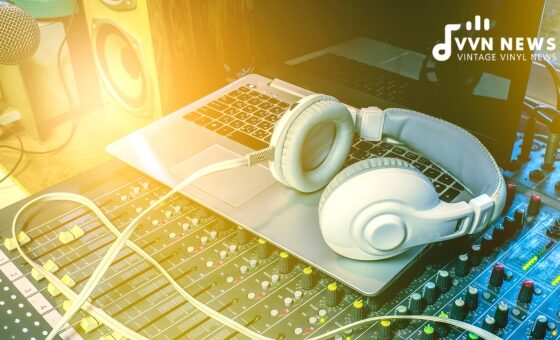Regarding the audio production realm, one debate seems to persist with particular enthusiasm: the in-the-box vs outboard mixing squabble.
This fascinating topic delves into how we produce and perceive sound in today’s technologically advanced world.
To clarify this ongoing argument, let me share my insights on these mixing methods and explore their strengths, limitations, and roles in modern audio production.
Many of you wonder what is in the box and outboard mixing. Is one method superior?
Does each hold its own under particular situations? Let me assure you these are the right questions to ask, and we will answer them comprehensively in this article.
So get comfortable, and let’s embark on this sonic adventure together.
Exploring the Concept of In-the-Box Mixing
In-the-box (ITB) mixing is a critical term in audio production. It refers to the method where all sound mixing occurs entirely within a digital environment – typically using a Digital Audio Workstation (DAW) – with no external hardware. The “box” here symbolizes your computer or laptop.
One primary reason ITB mixing is popular is that it’s designed for versatility and convenience. Theoretically, you can mix from practically anywhere if your laptop or personal computer is installed with a suitable DAW.
A range of DAWs are available today, such as Pro Tools, Ableton Live, FL Studio, or Logic Pro X, offering an astoundingly diverse set of tools for manipulating and producing sounds.
They provide us with audio tracks, MIDI tracks, ‘sends’ away to auxiliary channels with effect plugins, etc., allowing for specialized techniques like sidechain compression and parallel processing.
By leveraging these sophisticated tools offered by modern DAWs, editing capabilities, and sound-shaping plugins, ITB mixing can help transform raw recordings into professionally mixed masterpieces.
Also worth noting is the affordability factor. ITB setups are more cost-effective than outboard gear, often with higher price tags.
While cost is essential for many project studios and bedroom producers, it’s not the only basis for assessing these two methods.
Outboard Mixing: A Closer Look
Outboard mixing, commonly called “analog mixing,” uses physical equipment to process audio signals.
From vintage tube compressors to graphic equalizers and old-school faders to rotary knobs – outboard gear provides a tangible, audible character and warmth that we often associate with the “classic” music produced in yesteryears.
3 Essential Components of Outboard Mixing:
- Mixing Console: This equipment is the mainstay of any outboard setup, offering control over multiple audio channels and their parameters (e.g., volume level, pan position).
- Processors: Devices such as equalizers, compressors, reverbs, and delay units help shape the sound further by altering specific aspects ranging from tonal balance to dynamics.
- Tape Machine: Traditionally used for recording final mixes, tape machines offer a unique analog saturation that many digital systems strive to emulate.
When mixing on an outboard system, there’s nothing like having your hands on physical knobs and faders as you bring your creative vision to life, riding the faders with the ebbs and flows of the music.
With each piece of outboard gear having its distinctive sonic imprint, you can imbibe your mix with a kaleidoscope of tonal colors that is incredibly difficult – if not impossible – to recreate within a purely digital environment.
It’s pivotal we understand that these benefits do come with potential drawbacks, including cost considerations and lack of recallability, among others, which we will explore further in this article.
Also Read: Ear Fatigue Symptoms In Mixing [How To Protect Your Hearing]
Benefits of Mixing In-The-Box

In-the-box is synonymous with producing music completely inside a computer or digital medium.
When we talk about in-the-box mixing, we’re essentially referring to handling all aspects of a mix – from equalization and compression to spatial effects – inside a Digital Audio Workstation (DAW) with no external hardware processing gear.
As technological advancements skyrocket, in-the-box mixing is becoming increasingly viable and convenient for budding and professional musicians.
This alternative has its own unparalleled advantages, often making it the preferred choice for many concerned with cost and convenience above other factors.
Let’s dive into these benefits:
Exemplifying Electrical Stability
In contrast to their vintage analog counterparts, modern digital systems exemplify remarkable electrical stability.
They are immune to issues encountered commonly in older outboard units, such as noisy pots or faders, dying capacitors, power supply issues, and more.
This level of reliability allows for consistent results every time you open your projects.
Harnessing the Power of Analog Saturation Emulation
With today’s powerful plugin emulations (tools embedded within DAWs), you can replicate the harmonic distortion found in classic outboard devices, imparting an analog flavor to your tracks while maintaining the convenience of mixing digitally.
Software like Universal Audio’s UAD platform offers stunningly accurate models of classic gear that have been praised by acclaimed professionals worldwide for their authenticity.
Maximizing Flexibility with Absolute Recall
One area where in-the-box mixing truly shines is its ability to recall sessions instantaneously.
Every knob position, fader movement, and plugin setting on every channel is stored within your project file, which can be accessed anytime without losing any detail.
This provides unparalleled flexibility especially when handling revisions or multiple mixes, which would be laborious on an entirely outboard setup.
Saving Cost and Advancement in Quality with Plugins and DAWs
Undoubtedly, an ITB setup is significantly more cost-efficient than its outboard counterpart – making it fiercely attractive to home-based artists or smaller studios on a tight budget.
For what would amount to just a fraction of the price of one piece of boutique hardware, you can amass yourself an arsenal of outstanding plugins spanning countless styles and brands.
In addition to this palpable thriftiness – do not forget that top-tier software these days provides pristine sound quality nearly indistinguishable from hardware units when utilized properly – providing more incentives than ever before to venture wholly into the realm of ‘in-the-box.’
By acknowledging these potential benefits – you might well be convinced that given our present milieu – hybrid setups not only provide us with financial flexibility but also topple numerous limitations imposed exclusively by analog systems, thereby perfectly catering to an array of users belonging to prodigiously diverse professional horizons.
Also Read: 15 Best Studio Headphones For Mixing In 2025 [Pro-Level Sound]
Sound Quality and Authenticity
When we talk about the authenticity of sound in mixing, outboard gear deserves special mention.
Each piece of outboard equipment, be it an equalizer, a compressor, or a preamp, contributes its unique sonic color to the overall mix – lending it a quality often described as “warm” or “rich.”
A noteworthy advantage lies in how analog equipment manages clipping and distortion.
Unlike digital platforms, where any form of overdrive or clipping results in undesirable noise – referred to as digital distortion – analog gears tend to manage these situations more gracefully—a trait often associated with their characteristic warmth or crunch.
Acoustic Benefits of Outboard Mixing
Outboard mixing comes equipped with a set of acoustic benefits that’s closer to nature.
Comb filtering, an undesired effect resulting from time-delayed signals when combined, is flawlessly handled by analog devices, providing a more natural tone.
Moreover, analog gears can capture and reproduce audio over 20kHz – ultra-high frequencies that are inaudible to human ears but contribute subtly yet crucially to the overall perceived quality of sound.
This psychoacoustics phenomenon suggests that while these frequencies may not be directly audible, they can influence the perception of audible elements within the mix.
Also Read: Guitar Amp Mic Mixing [Guide To Creating The Perfect Sound]
The Drawcard for Tactile Interaction
There’s an aesthetic appeal to seeing signal chains physically presented before you and being able to alter them with your own hands.
Navigating between knobs, switches, and faders provides a raw connection with the music that’s difficult to replicate digitally inside the box.
A tactile alterable interface is not just tangible but has plausibility in guiding creative decisions due to the more intuitive workflow it offers.
It transcends beyond replicating real-world physics, taking one close to merging boundaries between technology and human interaction in pursuit of perfect sound design.
While we digitize and streamline audio productions towards cost-effectiveness, focusing on computers and plugins (in-the-box), there will always be an undeniable allure for actual physical buttons, knobs, and faders inherent in outboard mixing offering authenticity unattainable by intriguing lines of codes running inside your MAC or PC.
Mixing Middle Ground (The Balanced Approach)
Unsurprisingly, many audio professionals often strive to utilize the best of both worlds in their workflow.
This is commonly referred to as a hybrid approach to mixing.
So, let’s ponder over this balanced mix option and dive into why it has gained popularity in modern production circles.
Pondering Over the Best Mix Options
When considering the best mix options, several factors include budget constraints, project requirements, and personal workflow preferences.
The ultimate goal remains: to breathe life into your music and achieve a sonic texture that aligns perfectly with your creative vision.
In-The-Box Advantages: The digital landscape offers unprecedented precision, recallability, and cost-effectiveness. Not forgetting the vast array of available plugins within your DAW that emulate classic analog gear with startling accuracy.
Outboard Advantages: Outboard gear provides a unique analog character and tactile experience that feels ‘musical.’ It also mixes a sense of depth and space distinctively different from digital processes.
A Balanced Hybrid Approach
A balanced hybrid approach can offer:
- Unbeatable Flexibility: With this method, you still have all your digital tools at your fingertips while being able to inject some of that much-desired analog warmth whenever needed.
- Ability To Blend Worlds: A balance between achieving an immaculate precision offered by digital mixing and capturing the unmatched tonal fluidity from outboard gear provides a sonically versatile mix.
- Functional Pragmatism: By not restricting yourself to one particular method, you open up myriad possibilities for exploration – resulting in a pragmatic blend of functional aspects from both domains.
So, it’s clear that while technology will continue providing newer ways to manipulate sound, an experienced engineer will always find innovative ways to make optimal use of available tools – whether they are purely in the box or include outboard equipment as part of their setup.
Also Read: Mixing Bass And Kick For Low-end Balance [Expert Guide]
Analysis: Mix Entirely In-The-box Vs Outboard Mixing
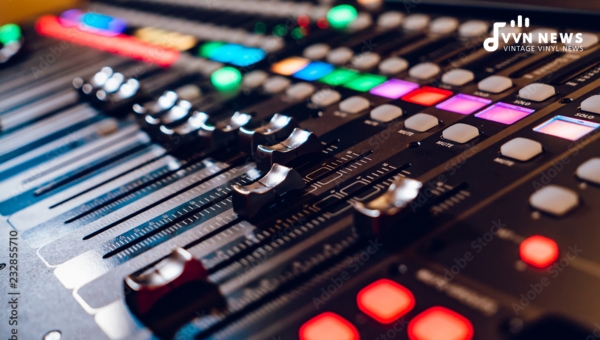
When approaching the conversation of in-the-box versus outboard mixing, it is essential to look at the techniques, methods, and, most crucially, results.
In-The-Box Mixing Techniques
In-the-box mixing utilizes a Digital Audio Workstation (DAW) with digital plugins emulating classic gear.
It includes techniques like automation, side-chaining, and multi-band processing.
The DAW provides complete control over every nuance of your mix, from EQ to dynamic processing and beyond.
- Results: With in-the-box mixing, you observe a more precise, analyzed approach to sonic sculpting that delivers clinical precision and impeccable recall ability.
Outboard Mixing Techniques
Outboard mixing integrates tangible audio equipment like mixers, processors, etc. Techniques often generate unique outcomes due to the gear’s distinctive tonal coloration and saturation characteristics.
- Results: With outboard gear use, a more tactile experience is accomplished, leading to a sonic output steeped in warmth and character associated with classic analog recordings.
The decision between in-the-box and outboard mixing hinges on personal preferences, project requirements, and available resources.
Understanding their strengths and limitations can help you make conscious choices for your unique audio production journey.
FAQs About Mixing Techniques
Why is In-The-Box mixing so popular today?
The popularity of In-The-Box mixing can be attributed to its affordability, ease of use, flexibility with digital plugins, and absolute recall of settings.
What is the main advantage of Outboard Mixing?
The chief advantage of Outboard Mixing lies in its ability to imbibe mixes with unique tonal character and warmth that in-the-box setups often attempt to emulate. This makes for a more authentic sound.
Can I combine both In-The-Box and Outboard Mixing?
Yes, you can indeed combine both methods. This approach is usually called a ‘Hybrid setup,’ which utilizes the best aspects of digital performance and analog sound.
How do I decide between In-The-Box vs Outboard Mixing?
The decision largely depends on your budget, workspace, project demands, and preference for tactile interaction versus digital flexibility.
Are there any limitations to using Outboard Mixing equipment?
While it offers unique sound quality, outboard mixing has limitations such as higher costs, space requirements, maintenance issues, and a lack of full-setting recall ability.
Conclusion
The in-the-box versus outboard mixing debate concerns personal preference, budget, and situational needs.
Both methods have unique merits: the immediacy and recallability of digital platforms and the tangible, warm character of analog gear.
A balanced approach seems to satisfy most as trends fluctuate – utilizing the best of both worlds.
Ultimately, your chosen path is simply a tool to help bring your creative vision to life.
After all, it’s not what you use but how you use it that truly matters in turning your audio masterpiece into reality.


